Expert Review
Citroen Relay Electric Panel Van (2022 - ) review
A very familiar looking large van goes electric with a system that feels, and looks, as though it has been shoehorned in.
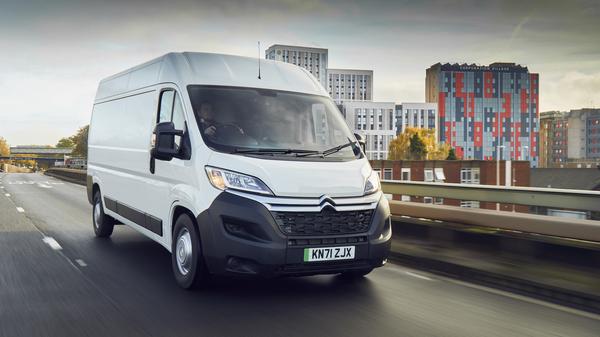

Words by: Tom Webster
Published on 21 June 2022 | 0 min read
The Auto Trader expert verdict:
3
The age and expected replacement date for the Citroen Relay means that it was perhaps inevitable that a conversion was the only way that you would get an electrified version of the brand’s large van any time soon. Where some rivals have managed to smooth over the edges and make the electric powertrain look as though it belongs, the e-Relay isn’t so successful – it looks very much like a conversion to even the most casual of observers. It is still decent at the basics but there are definitely more sophisticated options out there.
Reasons to buy:
- Decent electric range
- Choice of battery and body sizes
- Smooth to drive
Cargo & practicality
There are three lengths of panel van, a window van and two lengths of chassis cab in the e-Relay range. The three lengths range from L2 to the longest L4, with loading volumes from 11.5 cubic metres to 15 cubic metres.
The payloads range from 740kg to 1,150kg, but there is a big caveat with that – you need to go for the 4.4-tonne gross-vehicle-weight model to get that top carrying ability, and this requires extra training.
Expert rating: 3/5
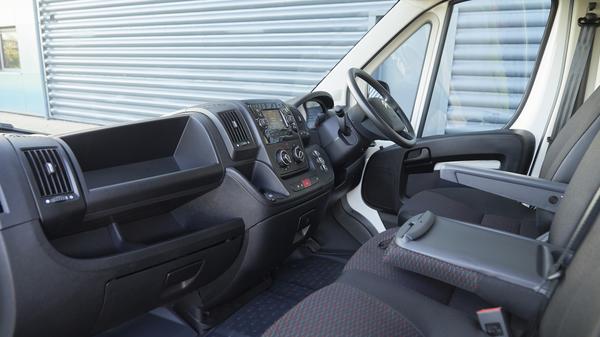
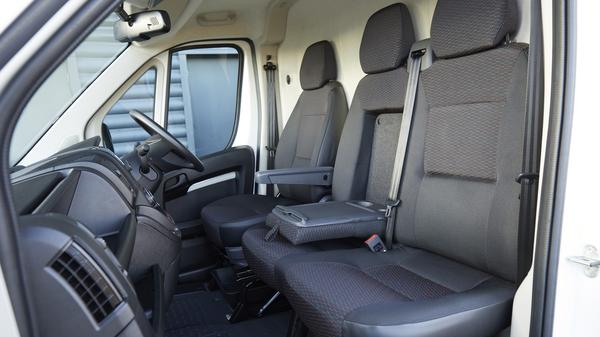
Interior
The Citroen Relay’s cabin was a dated and unspectacular affair by modern standards anyway, and putting in an electric drivetrain was never going to be a smooth process. However, where some brands have managed to make it work, the e-Relay is quirky to say the least.
The steps that the engineers have had to take to convert the Relay are clear, with buttons clumsily tacked on, new displays in the rear-view mirror and separate heating controls.
The oddest of them all is the instrument cluster. The budget clearly didn’t stretch to a bespoke display and instead you get the standard one from a Relay but with the needles removed from certain elements. The speedometer dial still works but the rev counter and heating and fuel gauges are both needleless and sit taking up space for no useful reason.
To get the necessary EV-relevant information you have to look up to the rear-view mirror, where there is a small display that tells you the basics such as the remaining range. The mirror is redundant in the panel van version of the e-Relay as you won’t see anything other than a bulkhead, so it doesn’t interfere with anything. It’s a clear display, and it is a well-ingrained head movement so it won’t feel like you are taking your eyes off the road to an unfamiliar place.
There is no gear lever, either, with a trio of buttons on a newly installed panel. It’s clearly an aftermarket addition, but it does work and the three buttons – Drive, Neutral and Reverse – are clearly labelled.
There are a few things that will need explaining to drivers new to the e-Relay, though. The start-up process is a two-stage one, where you turn a key and press a switch. The temperature controls are tucked away on a panel down to the right of the steering wheel, too, even though the fan is still controlled via the dials on the main console.
Expert rating: 2/5
Running costs
Buying an electric Relay isn’t a simple case of ditching expensive diesel for cheaper electricity, there are enough other costs involved that it is not a simple equation. Even after any government grants the purchase price is still more than £50,000, which is more than £10,000 more than the most expensive non-electric Relay.
That will only get you the smaller 37kWh battery, too, which comes with a range of 73 miles versus the 139 miles of the 70kWh battery.
Monthly costs will be more palatable, though, and there will be other less-immediate savings such as the lack of charge to drive into cities with emissions-based zones and the 0% company van tax rate. The servicing costs should be lower, too, thanks to the fewer moving parts in an electric van.
A typical charge on a 7.4kW wall charger from 0-100% will take around six hours for the 37kWh battery and 12 hours for the 70kWh battery. If you can link up to a 50kW charger then it will take an hour to get from nothing to 80%.
Expert rating: 3/5
Reliability
The Relay has been around for quite some time so many of the major issues with the physical van will have been long sorted out. However, there are caveats to an electric conversion such as this as it won’t have gone through the same in-house processes. It is too early to tell whether there have been any common problems, but the fact that it comes with an eight-year, 100,000-mile warranty on the battery on top of the standard three-year, 100,000-mile warranty on the rest of the vehicle should be of reassurance.
Expert rating: 4/5
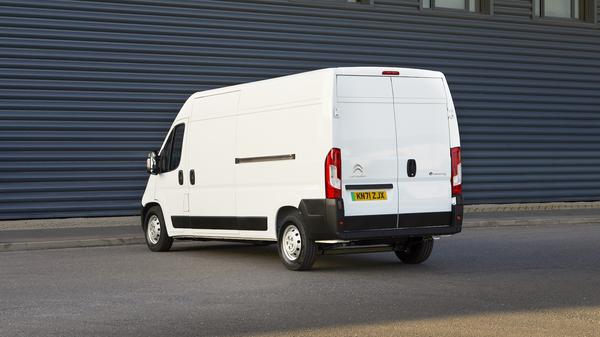
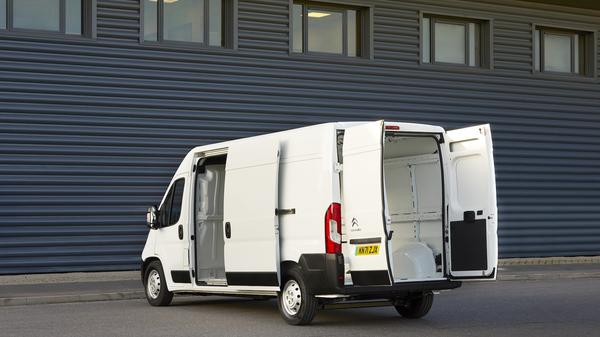
Performance
The e-Relay only has a similar level of power on paper as the entry-level diesel model, but it feels even more muted than that version as it has less pulling power at low speeds. There is little of the immediate kick of performance that you often get with an electric powertrain, and the speed builds progressively rather than in a hit.
This might be good for the load in the rear of the van, but it does mean that you feel restricted to sedate town driving – it feels somewhat at sea at higher speeds on A-roads or a motorway, particularly as there is no cruise control. Then there is the fact that making the most of the top-level 1,150kg payload will make it feel even slower.
There is only one driving mode – no performance or eco mode. This means that you don’t get a setting that is geared towards saving energy with lots of brake regeneration. It will scrub speed off rapidly when you take your foot off the accelerator but then it stops doing so, so it won’t get you all the way to a standstill.
Expert rating: 3/5
Ride and handling
The electric Relay has a controlled ride, which means slightly firm suspension and not much in the way of body roll if you throw it around a corner quicker than anticipated. This does mean that it bumps around a bit.
The steering is rather old-fashioned in its feel as it is rather heavy and there are no electronic systems to keep you in lane or similar.
The driving experience is hampered slightly by the driving position, which is also fairly old fashioned. The steering wheel is angled away and there isn’t enough adjustment in the seat.
Expert rating: 4/5
Safety
The old-fashioned nature of the Relay means that it doesn’t have much in the way of safety kit sadly. You get the van basics – an airbag is included but even a passenger ‘bag is extra.
You get emergency braking assistance, electronic stability control with hill start assist and an alarm, but not much more. There is certainly no lane-keep assist, crosswind assist, trailer assist or the like.
Expert rating: 3/5
Equipment
There is only one trim available for the e-Relay – Enterprise – and it doesn’t get masses of kit. The standard equipment includes a five-inch touchscreen, albeit an old-school one with no smartphone mirroring, Bluetooth, USB connectivity, air conditioning and rear parking sensors. There isn’t much that can be added on top of that, though, with nothing that leaps out as a must-have on the options list.
Expert rating: 3/5

Why buy?
The e-Relay is a box-ticker in many ways, as it does a competent job rather than a dazzling one. It’s not as sophisticated as the smaller Citroen electric vans, nor is it as modern and uncompromised as its rival large electric vans. If you are wedded to Citroens then it will do a job, but more as a stop gab until better options come along.
Expert rating: 3/5